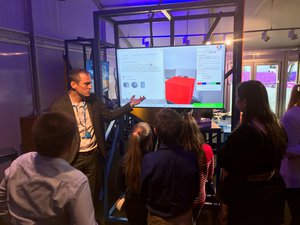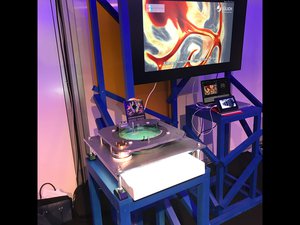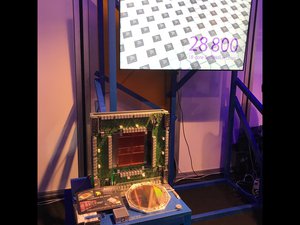The HBP at the Tallinn Digital Summit
29 September 2017
The Human Brain Project presented its work at the Tallinn Digital Summit alongside some of the most innovative projects and technologies in Europe.
The event was the first EU summit dedicated solely to digital issues and was held on September 29-30. As part of the summit a curated exhibition brought together the latest research and advances in areas ranging from e-government to 5G broadband, to the latest biomedical research.
The HBP was represented by its scientific research director, Katrin Amunts, the infrastructure director, Karlheinz Meier, and the executive director, Chris Ebell, as well as a group of scientists from different parts of the project.
HBP executive director, Chris Ebell, said the HBP was perfectly placed to be at the Digital Summit. “The Human Brain Project Infrastructure brings together highly advanced information technologies with brain science and medicine. The Digital Expo is a chance to show how the HBP infrastructure can have a real, positive effect on people’s lives.”
<iframe allowfullscreen="true" frameborder="0" src="https://www.youtube.com/embed/zRt5TjT87nk"></iframe>
HBP Scientific Director Katrin Amunts and Executive Director Chris Ebell discuss the project at the Tallinn Digital Summit.
The HBP showcasied three areas of its work; brain imaging, neuromorphic computing and neurorobotics. TThe HBP booth showed visitors the project's cutting edge 3D polarised light microscopy. This technology, developed by the HBP, reveals the nerve architecture of the brain in great detail without the need for staining. This technology not only gives new insights into brain structure but has also allowed neurosurgeons to implant medical devices into the brain with enhanced precision.
Visitors to the exhibition also got a taste of the work of HBP's neurorobotics team. The neurorobotics team explores how virtual brains work in real and simulated environments. This allows an exchange of information between neuroscience and robotics that not only produces better robots but also allows cognitive theories to be tested inside real and virtual bodies. As part of this, visitors could meet MiRO, a mammal-like robot built by researchers working within the project.
The third aspect of the HBP on display was the brain-based computing chip, the BrainScaleS neuromorphic wafer, which mimics biological neural networks. The HBP’s neuromorphic computing team is at the forefront of this technology. Neuromorphic computers provide a powerful tool for understanding learning. They also promise a new type of computer that can learn at enhanced speed with greater energy efficiency.
Amunts said many people had the chance get a close-up view of the HBP and she thanked the HBP team that made the exhibition such success.
Other exhibitors at the Expo include Nokia, Audi, the makers of a 3D printed silicon heart, the Graphene Flagship, and robots that help autistic children’s learning. You can find more information on the Digital Summit Expo here.

Dr Florian Rohrbein of the Neurorobotics team explains one of the virtual robot environments to visitors at the Tallinn Digital Expo. Photo: Oisin McArdle.

The display showcasing the HBP's 3D polarised light microscopy. Photo: Oisin McArdle.

The BrainScaleS neuromorphic wafer on display. Photo: Oisin McArdle.



